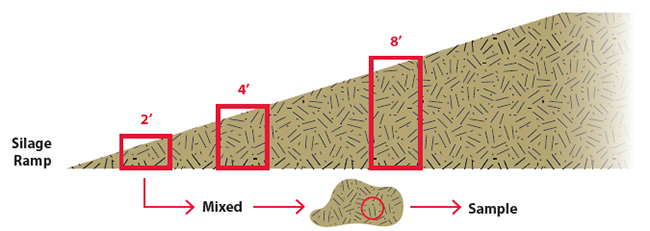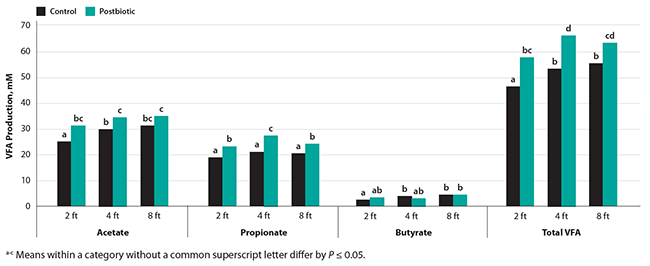Whether it is maximizing production, maintaining herd health, or controlling cost, feeding high quality forage is a key component. There have been significant technological advances in how producers grow, harvest, and store forages to maximize quality. Even with all the advances in silage management, dairies still struggle to maintain production and health when they open a new bunker or pile.
Farmers can experience a decrease in production and performance when feeding new silage, a phenomenon known as “silage slump.” Here are a few ways to avoid silage slump in your herd:
1. Watch the first few feet. In many bunkers and corn silage piles, ends tend to be sloped and silage on the front end is not packed as densely, making fermentation more likely to be compromised and allowing the growth of undesirable microbes. As you go deeper into the bunk – five to six feet high – feed is well packed, which creates an environment for development of ideal forages.
2. Blend the forages. When it comes to feeding strategies, consider blending silages to reduce moisture and nutrient variation and to dilute out any potential mycotoxins. As seen in the table below, nutrient profiles can vary in the first few feet of a silage bunker, contributing to “new crop corn silage slump” when switching silage piles. The varying pH levels indicate the fermentation differed as the silage depth increased. To create a more balanced forage, cut across the pile ends and blend the two-, four-, and eight-feet depths.


3. Deliver a consistent diet. Cows crave consistent feed. It’s critical to feed pens as close to the same time every day so dry matter intake stays as consistent as possible. Try to feed within 20 minutes of the target time of the previous days’ time. Much like humans, these animals need a structured routine for activities, as well as specific nutrition to maximize performance, health, and overall wellbeing.
4. Add an immunity boost. Work with your nutritionist to incorporate an immune support postbiotic product in your ration. In a 2020 commercial dairy field trial, a postbiotic product helped cows transition successfully between silage piles, while offsetting some of the negative effects observed from feeding new corn silage to dairy cows. Researchers also found total VFA (volatile fatty acid) production increased – as shown in the table below – when using a postbiotic product (turquoise) compared to that of the control (black) treatment.

Provide an ingredient that demonstrates the ability to enhance VFA production, help with transition, and support optimized rumen health and immune function.
A healthy rumen can digest feed more efficiently and supply the cow with the appropriate building blocks for glucose production, which drives higher production. Quality forages are a critical component in this process, which can result in healthier cows. Strive to have sound forage management protocols in place and incorporate an immune support postbiotic product to help with silage transitions. In the end, stronger immunity and greater production can be achieved.
Learn more at www.DiamondV.com/SmartCare.

